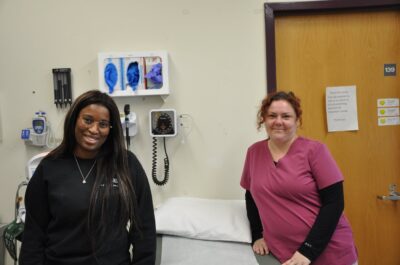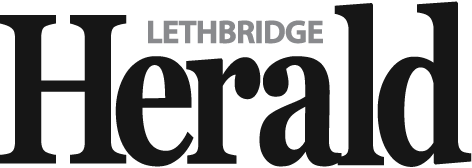In Quebec’s Nunavik region, constant water shortages compromise health care
By Canadian Press on November 23, 2025.

PUVIRNITUQ — Even if they’re surrounded by vast bodies of water as far as the eye can see, residents of Quebec’s Far North lack a reliable water supply.
Not only does this impact citizens’ health through the spread of diseases, but it weakens the quality of care and forces health workers to get creative in order to help their patients.
The Inuulitsivik Health Centre, located in Puvirnituq, serves seven communities running up the coast of Hudson Bay. The facility regularly lacks water, according to Dr. Vincent Rochette-Coulombe, who is starting his third year as a doctor in the community.
This lack of water has a direct impact on patients, he said. He gives the example of a chest drain, which requires inserting a tube into a hole created between two ribs.
“You don’t have water to wash your hands. The glove broke, and you wash your hands with Purell,” he said. “It doesn’t make any sense. It takes basic hygiene measures, and sometimes, we’re not able to accomplish them,” he said.
Raphaelle Durand, a nurse at the Inukjuak health clinic, or CLSC, has a similar, equally painful story.
“We found ourselves, the team of two nurses and a doctor, covered in blood and secretions,” she said. “It takes running water to wash ourselves, to be able to avoid transmitting diseases to other patients. This time, we washed our hands with bottles of water.”
Her colleague Luce Bugeaud Tremblay, who is new to nursing in the North, is shocked at the number of bottles of sterile water that get used. “It’s very expensive, but we use them excessively because if we don’t have water, we don’t have any choice but to use that,” she said.
Water is needed for all kinds of health services, from dentistry to childbirth. Margaret Mina, who has been a midwife at the Inukjuak CLSC for 20 years, is faced with the challenge of a waterless childbirth on a regular basis. Just last summer, the CLSC ran out of water for two weeks.
“(The women) are bloody when they give birth. We always have to wash them, and when there’s no water it’s impossible and it’s disgusting,” she said. “We have to use water bottles.”
Mina says the water shortages mean new mothers don’t wash their hands often enough when they bring their babies home, leading to more viruses for both mothers and children.
A bout of flu or respiratory syncytial virus, or RSV, can be dangerous for a weeks-old child, Mina says, sometimes requiring intubation or an air ambulance flight.
It’s also common for Nunavik children to end up dehydrated after catching a fever, according to Raphaëlle Carpentier, a travelling nurse who has spent the last year and a half travelling to different villages along Hudson Bay.
“The number one piece of advice we give to parents is to keep babies and children as hydrated as possible,” she said. “We tell them to give them water all day and to encourage them to drink.” Sometimes, she says, the parents answer, “but I don’t have any water at home. I’ll try to go buy some.”
Bottled water in Nunavik doesn’t come cheap — about $15 for a 4L bottle.
“They can’t afford to buy water, so once again, we give them bottles of water… but sometimes we don’t have any more either,” Carpentier said. “It becomes super risky. There are babies that come back and weren’t rehydrated because the parents just don’t have water at home.”
Afterwards, some have to be given intravenous fluids, “when it could have been avoided if they had had water at home,” she said.
An absence of water at home means handwashing is brief, showers are less frequent, and washing dishes and clothing can be delayed for several days. Public health authorities in Nunavik recognize that Indigenous residents suffer the consequences, and that the issues aren’t new.
In 2004, the Nunavik Inuit Health Survey found that lack of water access resulted in Inuit exposure to parasites and gastrointestinal illnesses.
“It’s certain that the lack of water, the fact of not being able to wash clothes, wash sheets, that contributes to spreading infections,” Rochette-Coulombe said. In his practice in the North, he sees “an enormous number of severe skin infections,” including in children.
“Sometimes they come to consult and it’s really severe, we have to give a lot of antibiotics,” he said.
Eczema is one of the skin problems that pops up, and it’s usually treated with creams. But there also has to be good skin hygiene to avoid infection, Carpentier says. Antibiotics are needed, the nurse explains, because patients can’t take regular showers or wash their clothes.
Last spring, the village of Puvirnituq went through a major water shortage that left residents without consistent water deliveries for weeks after a water pipe froze in a blizzard. The water trucks were also not able to collect water at the pumping station because of extreme weather on icy snowy roads.
The hospital patients had to be evacuated by air, because their security could not be ensured. Only very urgent cases were admitted to the hospital.
It wasn’t even possible to flush the toilets, according to Dr. Yassen Tcholakov, a public health doctor and unit lead for infectious diseases at the Nunavik regional health board. “It’s a situation nobody wants to see in a health establishment,” Tcholakov said.
Public health investigated what Tcholakov described as “very worrying situations of community-acquired pneumonia” during the weeks-long water shortage. “So, serious lung infections, which are almost certainly related to the fact that these illnesses are much more easily transmitted, because people couldn’t implement normal sanitary measures,” he said.
Rochette-Coulombe, who witnessed the crisis, remembers the outbreak of gastroenteritis that followed. “It just has to catch hold, and it spreads like wildfire,” he said. “Gastro is super contagious even if you wash your hands. Then, you can’t wash yourself, you can’t wash your hands, you can’t flush your toilet, it’s terrible,” he said.
The lack of housing only adds to the water shortages. In crowded conditions, viruses spread easily.
During the water crisis, some residents had to get their water directly from natural sources. Tcholakov noted that water in Nunavik is generally “very, very clean” — if it’s boiled first. “If people boil it, they normally eliminate all risk of infection,” he said. “But if they drink it directly, there can sometimes be pathogens in the water.”
“The situation in Puvirnituq, due to bad luck I think, was worse than usual,” he said. “But issues like this, access to water, happen year after year in several Nunavik communities,” said Tcholakov, who is calling on authorities to improve the region’s fragile water infrastructure.
This report by The Canadian Press was first published Nov 23, 2025.
—
Katrine Desautels received the support of the Michener Foundation, which awarded her a Michener-Deacon Investigative Journalism fellowship in 2025 to report the impact of the lack of access to water in Nunavik’s Indigenous communities. This article is the second in a series of four reports.
Katrine Desautels, The Canadian Press
-36

